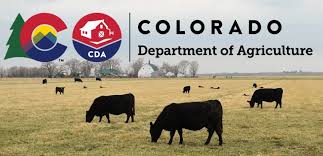These are the first confirmed cases of anthrax in cattle in Colorado since 2012, when more than 75 head of cattle died in a multi-premises outbreak in the northeast counties.
The Colorado State Veterinarian’s office reports the first case was confirmed at the CSU Veterinary Diagnostic Laboratory on July 23, 2022 after the producer had seven acute deaths in the herd. A second positive case in a nearby beef herd was confirmed positive on Tuesday.
Both herds are currently being monitored under quarantine. The cattle are being treated with antibiotics and vaccinated against anthrax. CDA and US Department of Agriculture (USDA) are also working with Sedgwick county to develop a disposal plan to minimize continued contamination from infected carcasses. Because anthrax is listed as a select agent by the USDA and the Centers for Disease Control and Prevention, the relevant state and federal agencies have been notified and appropriate precautions and investigations have been completed.
“Livestock producers in northeast Colorado should monitor their herds for unexplained deaths and work with their veterinarian to ensure appropriate samples are collected and submitted to a diagnostic lab for testing,” said Colorado State Veterinarian Dr. Maggie Baldwin. “Producers and veterinarians should refrain from performing field necropsies on suspected anthrax cases, due to the high risk of exposure to anthrax spores and possibility for human infection.”
Anthrax is a bacterial pathogen in livestock and wild animals. Ruminants such as bison, cattle, sheep and goats are highly susceptible, and horses can also be infected.
Anthrax is a very serious disease of livestock because it can potentially cause the rapid loss of a large number of animals in a very short time. Affected animals are often found dead with no illness detected.
When conditions become favorable, the spores germinate into colonies of bacteria. An example would be a grazing cow ingests spores that in the cow, germinate, grow spread and eventually kill the animal. Anthrax is caused by the bacterium, Bacillus anthracis. This spore forming bacteria can survive in the environment for decades because of its ability to resist heat, cold, drying, etc. This is usually the infectious stage of anthrax.
There are no reports of person-to-person transmission of anthrax. People get anthrax by handling contaminated animal or animal products, consuming undercooked meat of infected animals and more recently, intentional release of spores.














